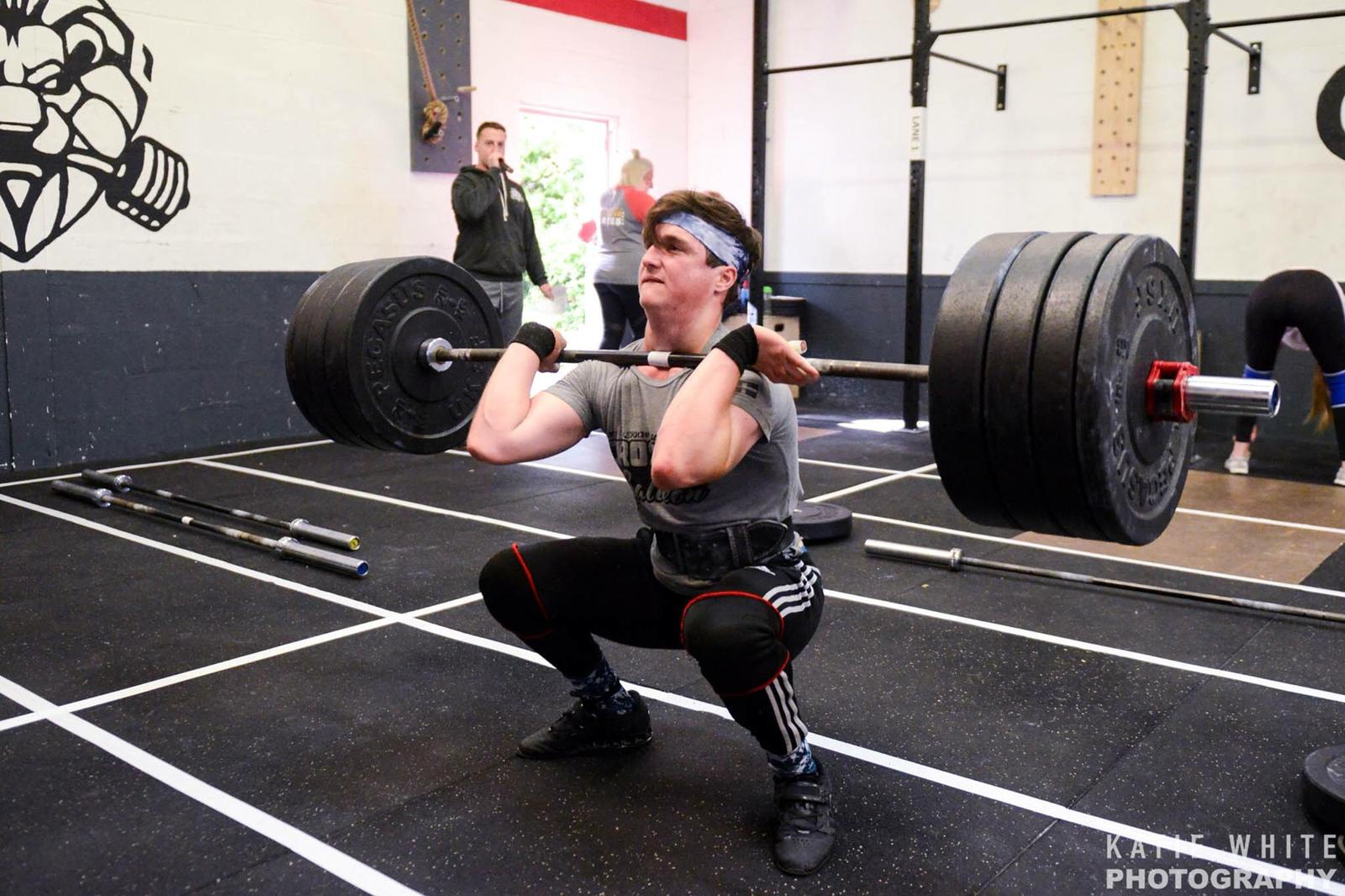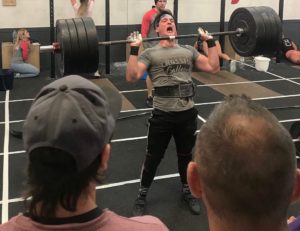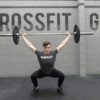
Muscle gain is commonly known as hypertrophy, this is the growth and synthesis of the muscle fibres & cells that make up the muscle belly itself. Within the muscle cell, we first have the muscle belly, within these there are lots of ‘bunches’ of muscle fibres, then within these deeper is the myofibrils and then Sarcomeres, which are simply the small components that all work together to create a contraction!! (Move a load or perform a movement).
When these are pushed with intensity (E.G. Lifting weights) effectively there is microtrauma to the muscle cells, this comes from repeated contractions, depletion of glycogen (Energy) and damage to actin + myosin proteins (These inhibit contractions).
From this microtrauma the central nervous system will enter the state of repair where the body is repairing and recovery in the aim to handle the stress if you were to impose it on the muscles again, during this recovery time protein synthesis occurs where these actin and myosin elements and sarcomeres are increased slight in size and numbers.
In short, say 5x 8 bench press at 80kg is performed and this is intense, the body is trying to prevent that being as intense for the muscles next time, hence the demand to grow!
To conclude the basics around hypertrophy, there are 2 types of hypertrophy and they both happen in conjunction but vary in contribution depending on training styles.
1: Myofibrillar hypertrophy
Myofibrils are made up of proteins that can contract and give us muscle function, it is an increase in the size and number of myofibrils in muscle. This increases the force with which muscles can contract, therefore improving strength/size
2: Sarcoplasmic hypertrophy
This is simply an increased volume of plasma in the muscle belly. The sarcoplasm is the plastic elements of muscle cells, and it includes proteins, glycogen, water, collagen, and other substances. This is almost a temporary hypertrophy, an increase of Glycogen intake, creatine or inflammation from muscle damage or ‘The Pump’.
We know that when increased fibres and contractile protein occurs the sarcoplasm will increase accommodating this new muscle volume; The 3 main factors to induce hypertrophy are:
1: Progressive tension overload
This is the increasing tension levels in the muscle fibres due to resisting or moving load, the aim to maximise muscle fibres used. The most effective way to increase this tension and keep overloading is with incremental increases of weight lifted. For example, 4 sets of 8 @80kg in week one followed by 4 sets of 8 at 82-85kg the following week.
2: Muscle Damage
This is the microtrauma mentioned above, these microtears are what the body adapts and recovers from to insure you are ‘better equipped’ to deal with this stress again. Although we aim for this we need to focus on insuring we are causing damage that we cant recover from, when building weight weekly you should insure it’s a steady process, along with that progression of reps can also be a factor to insure overload.
3: Metabolic stress
Metabolic stress is an exhaustion of substrates (Fuel) such as glycogen or ATP (Energy) due to higher rep sets and lighter weight, for example 3 sets of 20 would deliver more metabolic stress and less high levels of tension/high muscular activation (Heavy weight loading).
REP RANGES
The most common thought on how to gain muscle is 12 reps per set, which yes would induce hypertrophy as you are causing levels of muscle damage and mostly metabolic stress. However, you can get more bang for buck meeting in the middle ground, lets use a weightlifter as an example outside of bodybuilding, they all have pretty huge legs, right?
Reps of 1-3 deliver huge activation of all muscle fibres and very low metabolic stress, this adaption is more central nervous system based and wouldn’t induce lots of hypertrophy but increases in strength can have later Passover.
The stronger you are, the more load you could lift over a certain rep range, increasing recruitment and tension overload than last time, proving the importance of balancing strength and size training together, lining back to weightlifters, they are doing lots of squatting throughout the week so this frequency with heavy load would have hypertrophic effects over time, they also spend dedicated time to reps to focus solely on building muscle (Muscle lifts weights right!)
Another consideration is the movement, when we look at compound exercises (Squats, deadlift, bench press), they require a large number of muscle groups and are the movements we lift he most weight, therefore a good middle ground to deliver the mechanical tension, muscle damage and moderate levels of metabolic stress is roughly between 3-10, however the lower you go the more you steer to tension/total recruitment and the higher the more metabolic, however both will work in conjunction.
Here is an example:
- Weeks 1-3: 4 sets of 10 back squats @65% (for the 3 weeks add 2.5% and still perform 4×10)
- Weeks 4-6: 4 sets of 8 @70% (add 2.5% for 3 weeks)
- Weeks 7-9: 5 sets of 6 @75% (add 2.5-5% for 3 weeks)
- Weeks 10-12: 5 sets of 4 @80% (add 2.5-5% for 3 weeks)
Here you an see a template delivering both high tension, muscle damage/depletion which is key for causing microtrauma and adaption to induce protein synthesis, building and growing muscle fibres to handle more load/stress in the future.
The focus on your compound lifts is moderate volume and moderate to heavy load. Maximising the recruitment and activation of a larger percentage of muscle fibres, thus increasing muscle damage, tension and then an effective dose that you then MUST recover from to keep the progression going.
Finally, before moving to recovery, isolation movements, for example bicep curls, you wouldn’t apply the same focus on huge load and tension due to the size of the muscle site, if you pushed it the same way the damage and trauma is too much to effectively recover from.
This is where you would focus on smaller tension and more metabolic stress induced damage, for example 3 sets of 10, still moving moderate load (Relative to the muscle size) but progression could be adding a set or reducing rest slightly over a period to increase the stress as opposed to hammering low rep super heavy bicep curls, as this puts far more risk of injury due to the muscle size.
RECOVERY
Now, this is also a MASSIVE part of how you gain muscle. Linking back to my blog on the Structure for Strength, the super compensation model plays a large role in when you would target the same muscle group or movement again, for example, for a squat session like above, the CNS and protein synthesis recovery is between 2-3 days, 3-4 would be more appropriate for the heavier squat days but depends on the individual, you would avoid any heavy squat or leg movement for this period.
As an example you may squat on Mondays, and then wait until Thursday to then hit for example a deadlift and lunge based session before then resting the lower body until the next squat session. If you hit too much volume and don’t allow for the supercompensation (the point where the body exceeds its old best) then you are simply digging the recovery process further down until you would reach a point of overtraining. Give those muscles time to rest and GROW.
Finally, linking with this recovery is nutrition and rest!
To gain muscle, you need to be eating in a calorie surplus, you must consume slightly more than you burn to insure adequate amounts of carbohydrates and protein for the restoration of energy stores, protein synthesis and construction of muscle fibres, as they are made up of key proteins!
A guide of protein amount is 2-2.2g per KG of bodyweight, this insures you have adequate amounts for recovery of muscle fibres. Then working out your daily expenditure from rest and exercise combined would give you a rough daily guide, from there around 300-500 calorie more is a great starting point. Insure weight gain is very gradual and only add if after a few weeks if it plateaus.
Undereating and hypertrophy don’t go together and essentially you must feed the grow if you want to pack on some size, that doesn’t mean you will ‘get fat’. You will in fact boost your metabolism and hormones by lean mass increases. Which results in improved body composition and means, when you change your focus on leaning out you have a better level of muscle mass to do so effectively without losing lots of your hard-gained muscle!
SLEEP
There is so much to talk about for sleep (New Blog soon!) but for the purpose of muscular hypertrophy there are a few factors you need to keep in mind:
The body sleeps in 1.5hr cycles where the importance is getting the body through a full sleep cycle, at a minimum you must aim for 5 full cycles (7.5) but if you could reach 6 (9hrs) there is lots of research showing even more recovery benefit! The main reason we need this sleep is the production of hormones that aid in recovering muscle damage and CNS fatigue, this is the only time we are completely shut off during the day!
The key hormone release Growth hormone, it is protein hormone of about 190 amino acids that is synthesized and secreted by cells called somatotrophs. Linking with hypertrophy, this hormone release will have direct impact wit muscular recovery; it increases amino acid uptake & protein synthesis which in turn accelerates muscular recovery and improves your ability to keep you overload principles within training.
If you lack sleep, the recovery process is hugely disrupted, and not only can you not maintain training quality but the fatigue puts you are risk of injury if you persist with the same training.
The 4 keys for how to gain muscle: Overload, Structured Training, Nutrition, Sleep!
If you liked this post check out more of Oli’s blogs on Structure for Strength Training or How to Snatch











Recent Comments